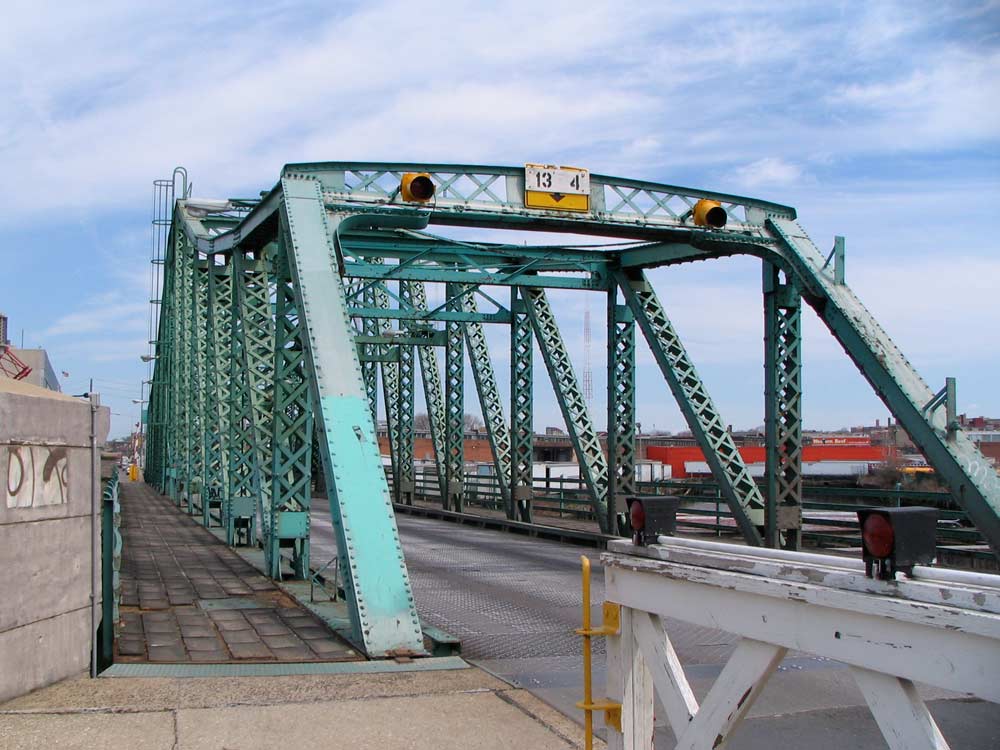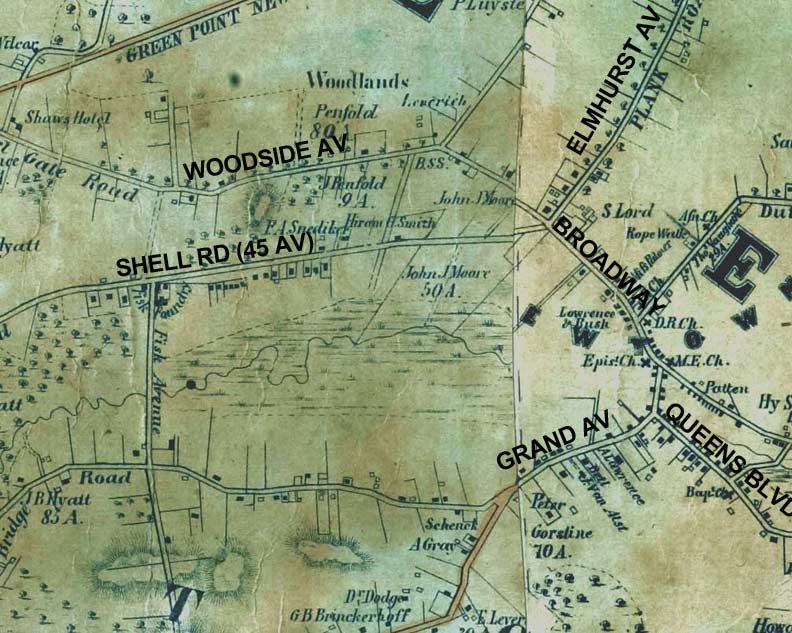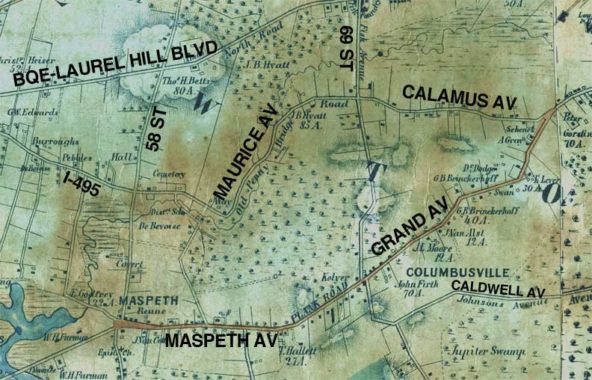Though a rough grid has been in command of the Queens street layout as dozens of separate housing developments knit together disparate small towns in Queens over the decades of the 19th and 20th Centuries, many major Queens routs follow the same paths they did in the colonial era, when they first evolved from Native American trails, which may even have followed the traces of wild animals.

An interesting case in point is Grand Avenue in Maspeth and Elmhurst. It is currently an eastern extension of Brooklyn’s Grand Street, which runs from the East River to Newtown Creek, nearly straight as a string. After crossing the rickety truss Grand Street Bridge, first built in 1901 and now slated for a replacement, Grand Avenue twists and turns, meandering northeast to the old town center of Elmhurst (Newtown) at Queens Boulevard and Broadway.
But the modern Grand Street-Grand Avenue system is a relatively recent development. This 1852 map illustrated it clearly. What we now know as Grand Avenue, the main drag of downtown Maspeth, is actually an eastern extension of Maspeth Avenue, which runs from Bushwick and Metropolitan Avenues in Brooklyn in two separate pieces separated by Newtown Creek. It runs through industrial regions on both sides of the Creek, but settles into a quiet residential area in Maspeth east of the Long Island Rail Road tracks.
In 1852, Maspeth Avenue was a major route known as the Plank Road and was bridged over the Creek. The bridge was removed as far back as the 1870s and was replaced by a pair of bridges on Grand Street, the second one surviving today.
The Plank Road meandered northeast to Elmhurst, angling to avoid farm properties and swamps. West of where the Plank Road turned northeast, Grand Avenue/Street was extended over the Creek and into Brooklyn, while the meandering Brooklyn and Newtown Turnpike was straightened somewhat and renamed Flushing Avenue (a naming scheme popular in the 1800s was to name a route not for the town through which it passed, but the town to where it ultimately led, sometimes by using other roads).
On this map, I’ve drawn in the current 3-pronged junction of Maspeth, Grand and Flushing Avenues that, in 1852, would still be about 40 years in the future. In that era, Mount Olivet Cemetery was brand new. It was first dedicated in 1850; surrounding properties were purchased later, until the cemetery attained its present uneven boundaries.

Meanwhile from the same 1852 map, here’s the northeast end of Grand Avenue, where it meets Queens Boulevard and Broadway. Broadway itself was, at this time, simply the east end of Hellgate Ferry Road, which, later renamed as Woodside Avenue, Newtown Road, and Newtown Avenue, was a colonial-era road running from the East River through swampy territory to the heart of Newtown. Queens Boulevard began as a trickle here called Jamaica Road; after Thomson Avenue was built out west to the Woodside area, it was renamed Hoffman Boulevard for a Queens boro president and in 1909, after the Queensboro Bridge was opened, it became Queens Boulevard, absorbing both Thomson Avenue and Hoffman Boulevard. Years of street widenings turned it into today’s behemoth by the 1930s.
Some interesting property owners can be found on this map. The Moores produced Clement Clark Moore, who most agree wrote “A Visit From St. Nicholas.” S. Lord is British immigrant Samuel Lord, whose Manhattan dry goods store became the Lord & Taylor retailing giant. Lord & Taylor announced in 2018 it would close its flagship 5th Avenue store.
Ancient road maps are endlessly fascinating.
Please help contribute to a new Forgotten NY website
Check out the ForgottenBook, take a look at the gift shop, and as always, “comment…as you see fit.”
7/31/18
